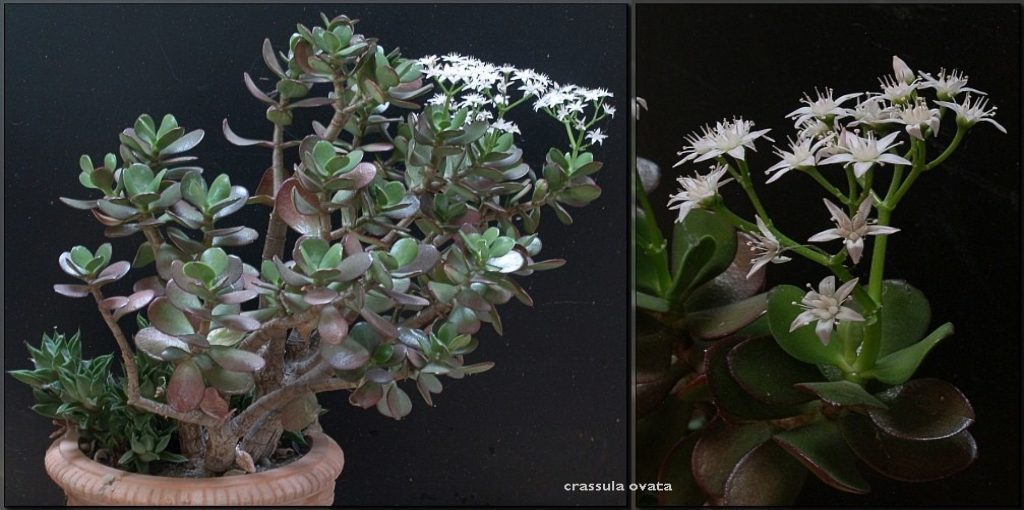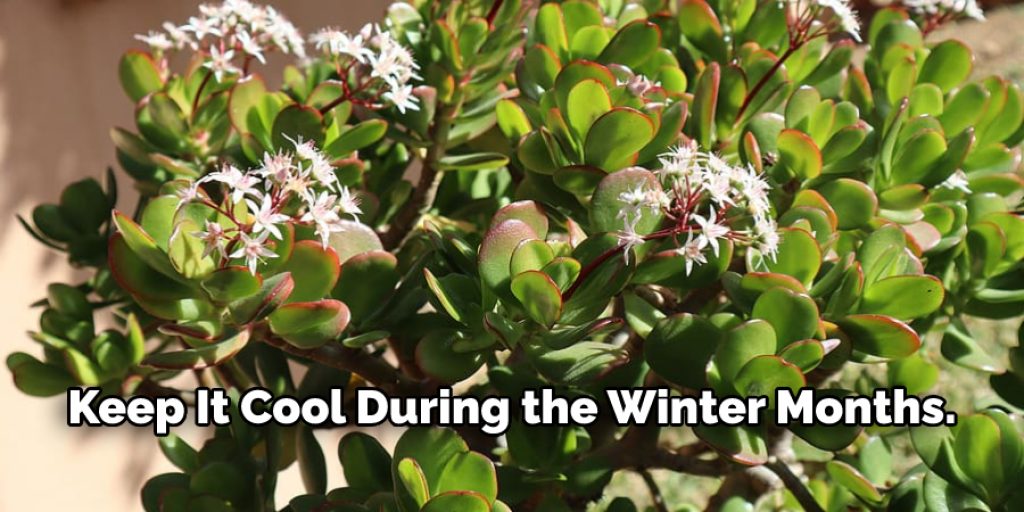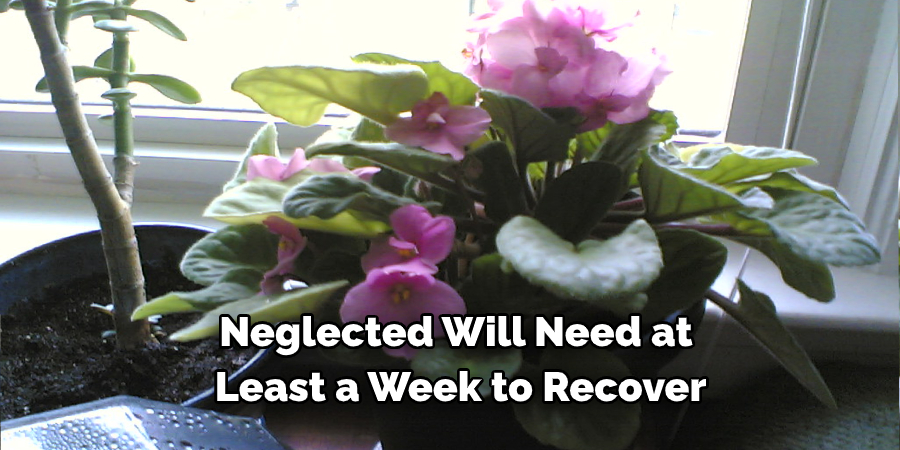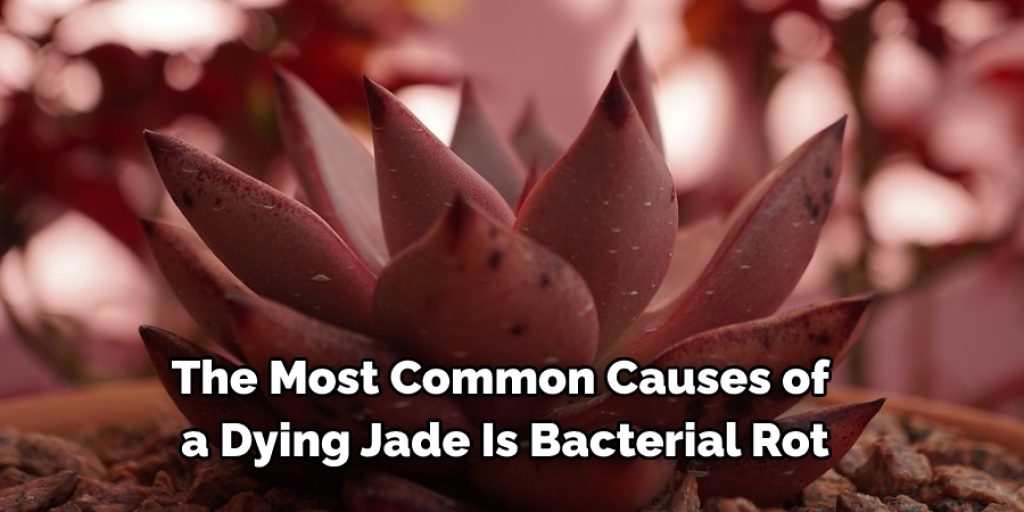How to Save a Jade Plant
Jade plants are one of the most popular houseplants to own. They’re also straightforward to care for and require minimal attention! Keep reading to learn how to save a jade plant that might be in danger. A common problem with Jade plants is brown leaves at the end of branches, indicating that it needs more water than what’s been given.
If this continues, the whole branch could die off and need to be trimmed away from the rest of the plant. To prevent this, ensure your plant gets enough water every day or two by watering thoroughly until water drains out of its pot. This will encourage new growth and keep brown leaf problems at bay!

10 Reasons Why Your Jade Plant Is Dying:
- One of the most common reasons a jade plant dies is improper watering. These plants require very little water, and if you keep them constantly wet or allow them to dry out completely, the leaves will turn yellow, droop, and eventually fall off.
- Sunburn can also be a problem for a jade plant. The leaves can burn from too much exposure to the sun, which will cause a loss of leaves and a drooping tip.
- Unfortunately, if your jade plant starts to slump over and its leaves turn yellow around the edges, it is likely to root rot. Root rot happens when roots cannot get enough oxygen in their soil, whether because of potting soil or waterlogged soil.
- Jade plants like warmth and can suffer in cooler temperatures. Therefore, jade plants should be kept away from drafty doors and windows.
- Jade plants need water but cannot have their leaves wet constantly. Therefore, they should only get watered when the soil is dry to the touch.
- A jade plant that drops its leaves may not get enough light or a balanced/sufficient fertilizer diet.
- If the jade plant begins to droop quickly after watering, it may be damaged roots or damage from pests.
- If you are not fertilizing your jade plant, this can lead to drooping leaves and yellowing leaves.
- Sometimes, a jade plant will begin sprouting small white flowers and then lose its leaves. This is because many leaves are probably getting too much water in a short period.
- If the humidity around a jade plant is low, your jade plant will suffer. Keep your jade plant away from heaters and vents, which can dry out the air around the plant.
15 Ways on How to Save a Jade Plant:
Here we have given some ways how to save a jade plant in a pot. So read on and find out!
1. Water It a Little Less.
Jade plants are succulents, meaning they store water in their leaves and roots. So when you see your jade plant looking shriveled, water it thoroughly and then wait to water it again until the soil is almost arid. Seeds need oxygen to survive, so overwatering can kill a jade plant as quickly as underwatering.

2. Don’t Overfeed It.
Jade plants don’t need fertilizer to grow and thrive, so feeding them can cause leaf loss and damage, leading to a weakened jade plant that’s more susceptible to disease and pests. Stop fertilizing for at least six months to give your jade plant a break from any nutrient burn.
3. Let Sunlight Fall on It for an Hour or Two Every Day.
A jade plant that’s kept out of direct sunlight won’t grow as quickly and will be more susceptible to pests, disease, and damage from low humidity. Jade plants need a few hours of morning sun and bright indirect light the rest of the day. If you live in a warm, sunny climate, your jade plant can live outdoors year-round.
4. Keep It at Room Temperature.
Temperatures below 50 degrees Fahrenheit will slow down the growth of a jade plant and cause leaf loss. If you live in a cold climate, move your jade plant close to a south-facing window to keep it warm during the winter. It can survive as low as 40 degrees Fahrenheit for short periods, but anything much lower than that can kill it.
5. Induce Dormancy.
Jade plants require a winter rest period to keep them healthy, so bring yours inside before the temperature falls below 50 degrees Fahrenheit and place it in an area that gets no natural light at all during the winter months. It will lose its leaves, but don’t worry, new ones will come in.
6. Report It in Suitable Soil.
Jade plants are very drought resistant, so they can be rootbound easily. Report your jade plant into fresh potting soil containing one-third sand or perlite to ensure good drainage and aeration every spring. Don’t worry about damaging its roots while repotting; jade plants can survive without them.
7. Treat It Like a Lactus.
Wear gloves when you’re handling the leaves because they easily detach and fall off if bumped or rubbed against something hard. Keep your jade plant on an uncluttered windowsill so its leaves can reach light easily.
8. Look for Signs of Stress or Damage.
Jade plants in distress will start to yellow and drop leaves, so look for any discoloration and remove dead leaves promptly with pruning shears. If your jade plant doesn’t recover from having its leaves removed, it’s most likely no longer a viable plant, so throw it away.
BENGALI
9. Watch Out for Pests.
Mealybugs, spider mites, and aphids are common jade plant pests that can weaken and spread disease. If your plants get infested with mealybugs or spider mites, wipe them away immediately with a cotton ball dipped in rubbing alcohol. Aphids aren’t as easy to punish, so use a cotton swab dipped in isopropyl alcohol to remove them.
10. Propagate It.
Stem cuttings can easily propagate jade plants, so try taking one or two branches and placing them in the soil to see if roots sprout. You’ll need a porous potting medium like perlite, vermiculite, coarse sand, or pumice for your cuttings to root successfully.
11. Keep It Cool During the Winter Months.

Suppose you live in an area where jade plants can go outdoors during the summer, try not to move them back inside until the temperature has warmed up a bit. Jade plants exposed to sudden changes in temperature after being moved indoors will likely drop their leaves.
12. Don’t Over-water It.
Jade plants don’t like to be soggy, so water them once a week until the top half-inch of soil feels dry. During winter, watering is reduced to about twice a month or whenever the soil is arid (but not crumbly).
13. Give It a Rest in the Winter.
Jade plants kept all year outdoors will need a two-month break from watering during the colder winter months to go dormant and conserve their energy, so keep them on a sunny windowsill and water sparingly until springtime.
14. Feed It Fertilized Water.
Jade plants can survive for a long time without being fed, but they will grow much faster and bloom more frequently if you provide them every three to four months with a balanced fertilizer diluted to 50% of the recommended strength or less. Avoid using high-nitrogen fertilizers; they aren’t suitable for jade plants.
15. Cut Off Dead Leaves.
Please don’t wait for your jade plant to drop its leaves before you clip them away with pruners. Dead leaves that are left on the stems of the plant can cause rot, so take care of them as soon as you see them.
You Can Check It Out at Deweed a Lawn
Tips to Maintain Your Jade Plant:
Here are some tips for caring for your jade plants so that you don’t have to look at how to save a jade plant again.
- A Jade plant that has been neglected will need at least a week to recover. A Jade plant may dry out completely before it starts showing signs of regaining its health, so do not assume it is dead until you see all or most leaves perking up again.

- After bringing back your Jade plant from the brink of death, it is probably best not to let it get that close again. However, if your Jade plant typically needs water every week, continue with that schedule unless you have a particular reason to do otherwise.
- When watering a mature Jade plant, soak the soil until water comes from the pot drain hole. With younger Jade plants, the soil should be barely moist to the touch before being watered again.
- Fertilizer should only be applied once weekly during the growing season (spring and summer). You can choose a water-soluble or time-released fertilizer, whichever is more convenient. Follow package instructions for amounts, mixing it with water before pouring it onto the soil.
- Take cuttings throughout the year to help replace old or unruly plants. Make sure you have permission from the original owner, though! Cuttings should include multiple stems, each with its leaf bud.
- Make sure your plant is in the correct spot. Jade plants can get top-heavy, especially when there are multiple trunks. Also, remember that a Jade plant will grow in any direction it leans, so be wary of putting it somewhere with little light or airflow where it might not be able to support itself.
- Make sure your plant is not in the wrong spot. Jade plants are forgiving of many conditions but are sensitive to extreme temperatures. Avoid putting it in direct sunlight or near any drafts, especially if you live in a warm climate.
Frequently Asked Questions:
Q: Why Are the Leaves on My Jade Plant Falling Off?
A: Jade plants (Crassula ovata) are slow-growing succulents that add texture and color to indoor or outdoor gardens. Jade plant leaves naturally turn yellow on the tips, edges, and sometimes the whole leaf, but healthy new growth may appear before you notice any of the older foliage has died. The leaves naturally turn a uniform gray for some jade plant cultivars as they age.
Jade plants may lose some or all of their leaves if exposed to cold temperatures. Jade plant leaves that fall off due to cold damage will not grow back until spring, but it is safe for you to trim away the leafless jade branches if the plants are still green on the inside.
Q: Can You Save a Dying Jade Plant?
A: Jade plants are tropical succulents that can live for decades with the proper care. However, like all living things, jade plants eventually succumb to disease or death. If your jade plant is limp and yellow despite appropriate water and sunlight, it’s probably on its way out.
Luckily, there are several ways you can revive a dying jade plant. We have already discussed the ways how to save a jade plant. So be sure to check this full blog post if you want to save your jade plant before times run out.

Q: What causes Jade Plant to Die?
A: Bacterial rot is one of the most common causes of a dying jade. Bacterial rot strikes the base of the stem first, causing leaves to brown and wilt. This can spread throughout the entire plant if not treated quickly. To fix this problem, remove all affected branches with sterilized pruning shears.
Another common cause of jade plant death is root rot, when roots cannot get enough water. To avoid this, ensure the plant receives at least 1 inch (2.5 cm) of water per week. If your soil dries out before that time has passed, then you must put at least 2 inches (5 cm) of water into the ground for one whole day. Make sure that your pot drains excess water to avoid root rot.
Conclusion:
As the Jade Plant is succulent, it must be watered more often than other plants. Be sure that you are watering your plant just enough so that the soil does not dry out completely but keep in mind that this plant should never have too much water.
The leaves on their own can also provide some shade for themselves or smaller plants around them! If you follow these simple steps on how to save a jade plant and make sure to give your jade plant all of its necessary care, it will survive longer. If you have any questions about caring for this plant, please contact us – our team would love to help!




